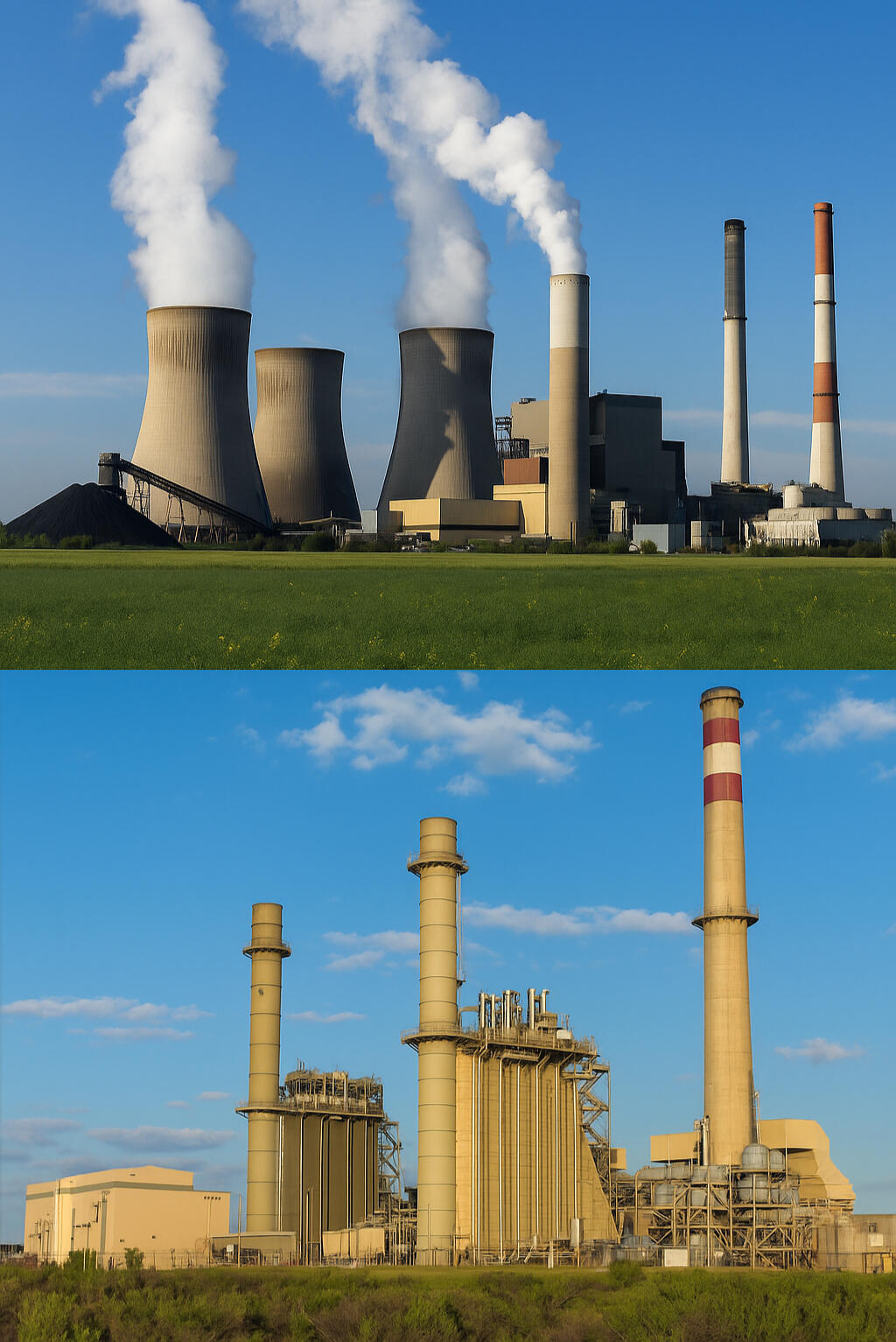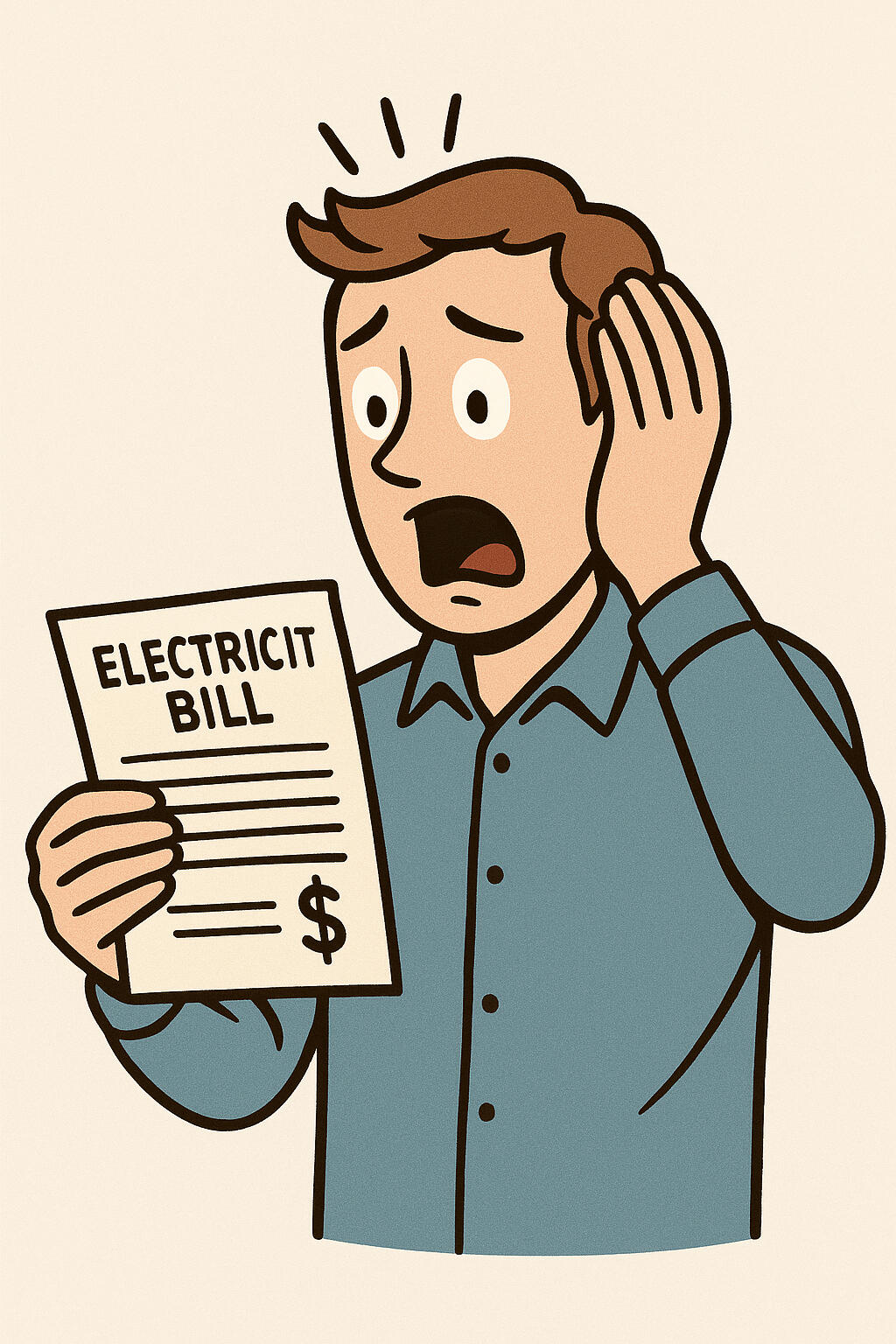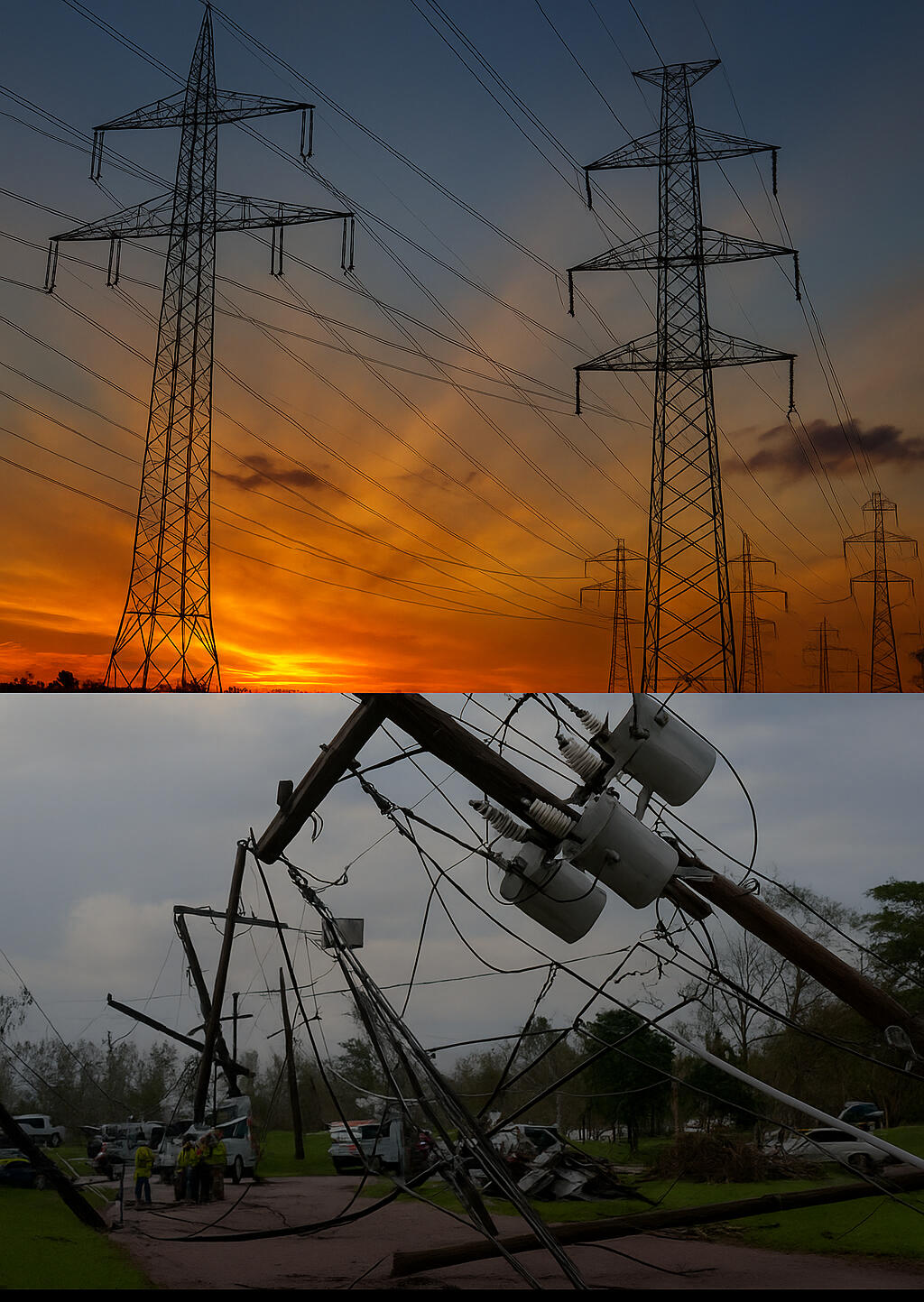Outdated Power. Rising Demand. One Solution.
The world is changing faster than the energy systems that power it.The average homeowner currently spends $3,816.22 per year on electricity.
For those home that rely on fossil fuels, uses, on average 10,000 kWh of electricity which creates ~8,000–9,000 lbs of CO₂ per year.
Power generation: ~1.55 billion metric tons.
Passenger vehicles: ~1.1 billion metric tons.
Each gallon of gas burned = ~20 lbs of CO₂.The power we generate today is barely enough to meet current demand which is only growing by the day.We cannot build enough wind or solar to replace fossil fuels, that just is not feasible, but, even if we could, there’s no way to move that power where it’s needed, not with our current power grid.Most of the U.S. power grid was designed between the 1920s and 1970s — long before AI, data centers, electric vehicles, and climate extremes became everyday realities. Our current system is outdated, overloaded, and increasingly unstable.What about CO₂, it is not enough to just lower the output, we have to start removing what’s already in the atmosphere.Add to that rising demand, rising costs, and the limitations of solar, wind, and fossil fuels, and one thing becomes clear:
We don’t just need more energy, we need a better way to make it.That’s why we created a system that’s clean, scalable, closed-loop, and entirely independent of fuel, fire, and fragile infrastructure.This system solves ALL of those problems at once.
Clean power. Anywhere. Scalable. Now.

Where does our power come from?
Right now, 99% of the homes in the U.S. are connected to the electrical grid, the wires that come into the house and power the refrigerator, the computer, the TV, the lights. That electricity is generated at power plants, sometimes hundreds of miles away, then sent across those tall transmission lines we see crisscrossing the countryside. Even with all of these power stations and all these lines the need for electricity continues to outpace our ability to generate it much less transport it.
Right now electricity is generated using different methods:
Natural Gas ~39% (Fossil fuel)
Coal ~16% (Fossil fuel)
Nuclear ~19%
Renewables
→ Wind ~11%
→ Solar ~4%
→ Hydro ~6%
→ Biomass/Geothermal ~1%
Total ~22%
Petroleum <1%
That means over half of all electricity in the U.S. still comes from burning fossil fuels. Even with improved carbon capture, this still releases millions of tons of CO₂ into the air every year, and fossil fuels are a resource we’re eventually going to run out of.
Nuclear is reliable, but expanding it takes massive construction, long timelines, strict security, and permanent waste storage. Wind and solar are growing fast, but they’re expensive and 100% weather-dependent. Hydropower is clean, but nearly every viable river in the U.S. has already been dammed, and many of those rivers now suffer from low water levels, even if there were rivers that could be dammed, people will lose their homes, farms, businesses to the lake that would be created behind it.
Even if we could build more power plants, or Dam more rivers, right now, we simply don’t have the infrastructure to move that electricity to the homes and businesses that need it. Building that infrastructure, new lines, substations, and support systems, even if we started today, would take 30 years or more and cost hundreds of billions, if not trillions of dollars Who would bare the burden of that cost, you, that’s who, the utility customer, remember, they set the rate for their electricity, not you!

What makes it even worse?
That system would still face the same problems:
Knocked out by storms, hurricanes, wildfires, or a car crashing into a pole.
A single tree can take down an entire neighborhood.
Live lines fall, people get injured or killed, and repairs take hours, sometimes days.
The fact is, the U.S. electrical grid was designed and built between the 1920s and 1970s more than 70% of transmission lines are over 25 years old, and a large portion of the grid is pushing 50+ years. That was back when you had to get up to turn the TV, rotary dial phones were the height of technology and the rocket that sent men to the moon had 1/10th the power of a modern cellphone!s.
It was never meant to handle:
AI servers drawing megawatts around the clock
Millions of electric vehicles plugged in across the country
Weather-dependent solar and wind power
The energy load of a 21st-century digital economy
The massive energy draw of data centers and AI
Support millions of electric vehicles charging simultaneously
Balance the intermittent nature of solar and wind
Or survive the frequency and force of modern weather disasters
We’re running modern life on a system that’s outdated, overloaded, and increasingly unreliable.
Bottom line?
You can’t power the future with a grid from the past

Think about this.
With all the talk about Electric Vehicles and how great they are, has anyone ever stopped to ask where the power comes from to charge them? Want to guess how much it cost in electricity to charge one? Want to guess what happens when a storm knocks out the power and you cannot charge it?What about AI, that is supposed to be the coming future. AI is a Power-Hungry Monster, every AI system runs on massive server farms filled with high-performance GPUs, those GPUs consume 10x more power than traditional data center CPUs, multiply that by tens of thousands of servers per company add redundant backups, real-time routers, and load balancers.And now? Stack on industrial cooling systems that burn power just to keep the systems from melting down just the cooling alone for some AI clusters equals the power usage of small towns
Real Numbers (to drive it home):
In 2023, one AI request used ~1 watt-second, not much, until you multiply it by billions of requests per day Training an AI engine? Estimated 500 megawatt-hours, that’s enough to power 15,000 U.S. homes for a day
Microsoft and Google’s AI expansions are expected to increase data center power demand by up to 30% in the next few years
Where is that power going to come from?
The grid doesn’t need more power. It needs fewer users!
The power that is generated in the US alone will be more than sufficient to handle the infrastructure that cannot be adapted to using one of these systems as long as homes and businesses are.
This system does just that by providing each and every home and businesses with the ability to produce it’s own electricity!
Homes and Businesses will no longer need to be tied to a failing, overworked grid.
Power being knocked out for whatever reason, no longer an issue.
But let’s not also forget, most importantly, no more massive utility bill every month!
The anxiety of opening the electric bill, gone!
The worry about running the Air Conditioner because you will not be able to afford the bill and put food on the table, gone!
The stress of having to go behind the kids turning off lights, over!
Having to call the utility company asking for an extension to pay the bill, no longer an issue!
That is why we need these systems and need them NOW!
Future demands
As the drive to go all EV heats up, we have to ask where is that power going to come from, currently, we think we are helping the environment by taking fuel burning cars off the road, but really, switching from an internal combustion engine to an EV doesn’t erase pollution, it just relocates it.
You're not charging your car with magic.
You're charging it with electricity and right now, most of that electricity is still produced by burning fossil fuels. So unless the grid itself is clean and stable, you're just swapping exhaust pipes for smokestacks.
These systems will prevent that in two ways, first, by charging existing EVs and second, by eventually being installed in cars replacing internal combustion engines.And AI?
We don’t need to build new infrastructure for AI, we just need to free up the one we already have.That means:
Take homes and small businesses off the grid with decentralized systems and reclaim that power and reroute it to AI data centers.
Let AI expand faster because it's no longer throttled by infrastructure bottlenecks
And as a bonus?
AI gets cheaper and better for everyone because the supply side finally catches up
This is indirect infrastructure expansion.
You’re not waiting for:
Grid modernization (decades)
Utility-scale nuclear or fusion (pipe dreams)
National legislation (Don’t hold your breath waiting on that one)
Instead we are relieving the load so AI can grow without gridlock.
We don’t just solve the energy problem — we solve the AI bottleneck.If we take U.S. homes off the grid, here’s how much continuous power could be rerouted directly to support AI infrastructure:
% of U.S. Homes Off-Grid Power Freed (MW) AI Data Centers Powered (500MW each)
10% 15,778 MW 31,556 AI facilities
25% 39,445 MW 78,890 AI facilities
50% 78,890 MW 157,780 AI facilitiesFor every 10% of U.S. homes taken off the grid, we unlock enough electricity to power over 31,000 full-scale AI data centers.
That’s not a solution — that’s a quantum leap in capability.
We’re not just helping solve the energy crisis…
We’re clearing the runway for the future of intelligence itself.
Want to learn more about the rest of EddyTech Innovations?
If you want to learn more about EddyTech Innovations, just select a topic below